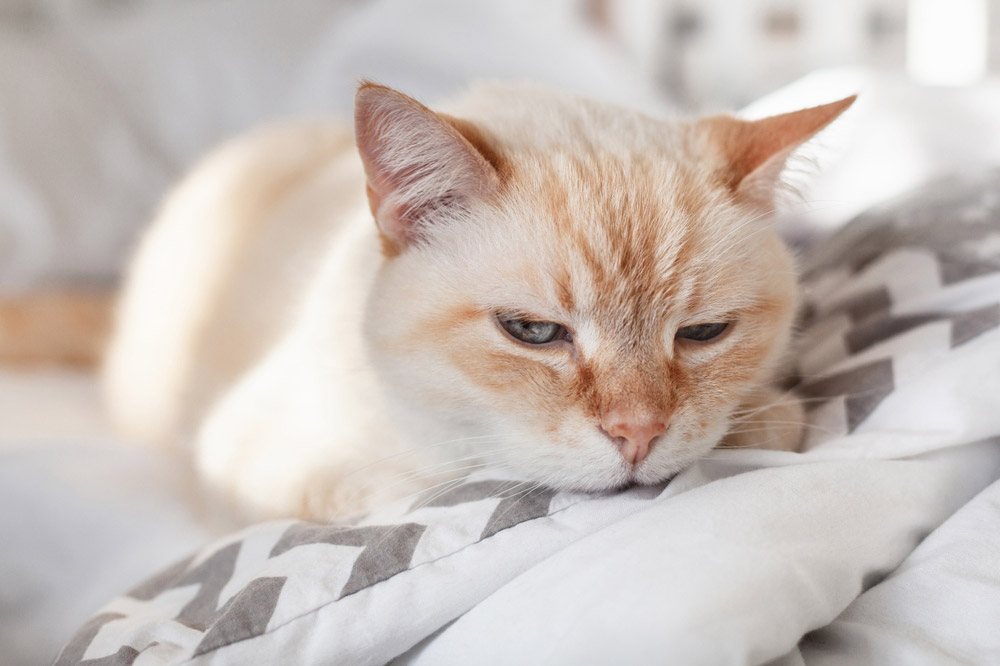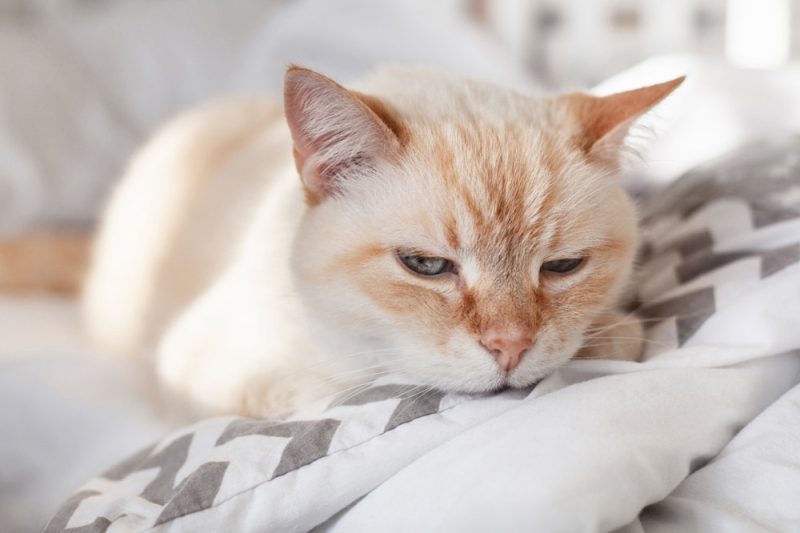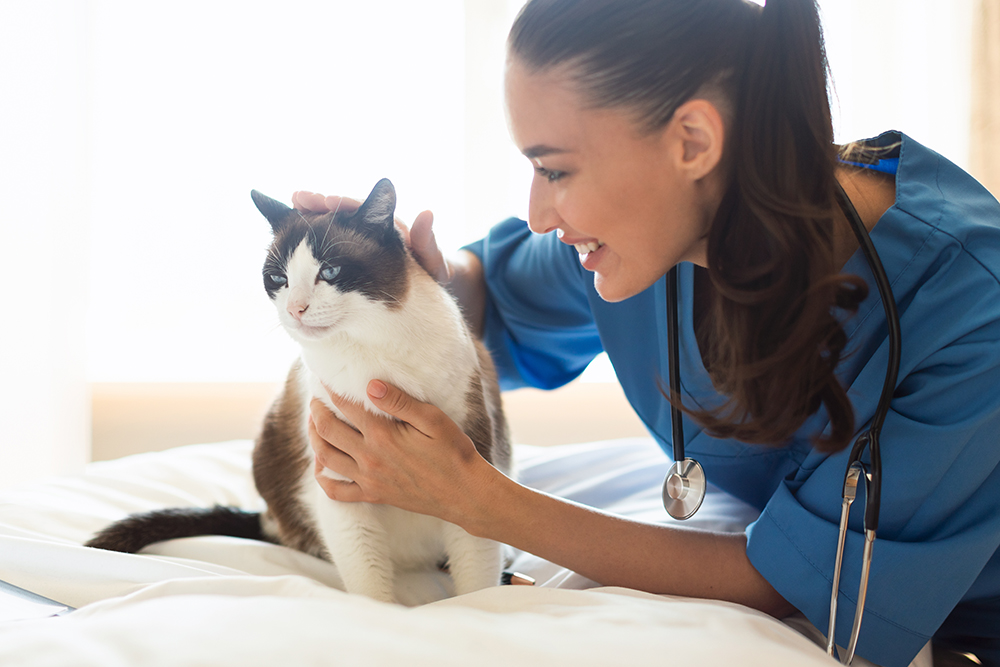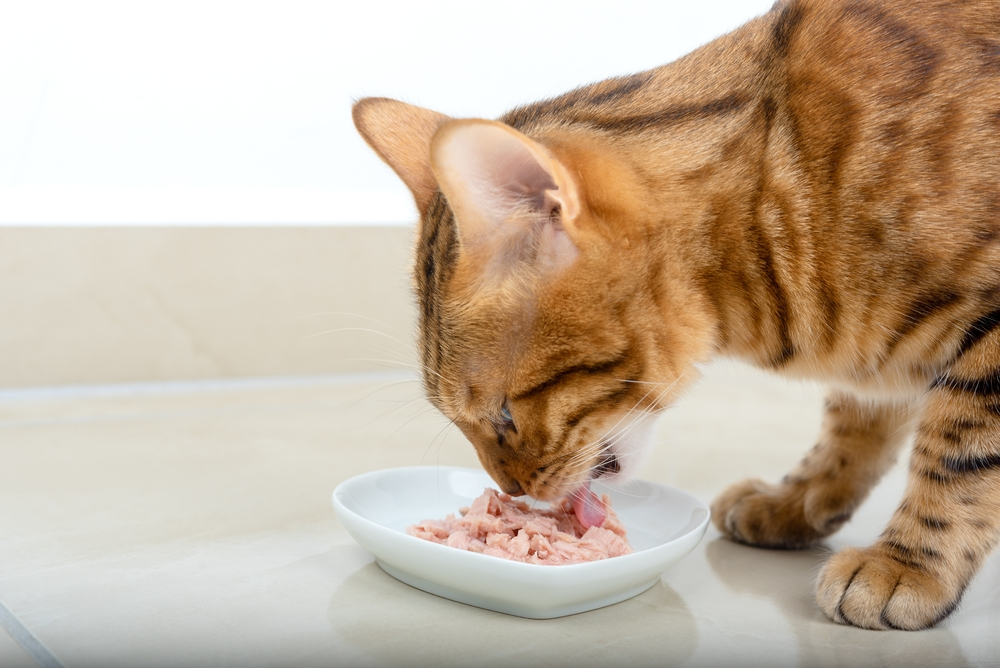Click to Skip Ahead
Have you taken a look at your cat’s backside and noticed something unusual? Perhaps it isn’t looking as it normally does. You might be wondering, can cats get hemorrhoids? After all, that could answer the enigma you’re staring at. But the answer is a little complicated.
Cats don’t get hemorrhoids in the same traditional manner that a human does. What exactly does this mean? We’re going to go over the common conditions that can be confused with hemorrhoids in cats, what they mean, and the solution to the problem.
Cats Can’t Get Hemorrhoids, Traditionally Speaking
According to PetMD, cats do not get hemorrhoids in the same manner as humans. Hemorrhoids are swollen blood vessels in the lower rectum or anus. People commonly suffer from this condition if there is extra pressure on these vessels- for example in pregnancy, if overweight or when straining to defecate. A cat’s anatomy is different to ours, as they walk on four legs and their lower gastrointestinal system runs horizontally. This means that less pressure is put on these blood vessels. So, if you are seeing something similar, it isn’t exactly hemorrhoids that you are noticing, but there are some conditions that can cause similar signs.

The 5 Reasons Cats Might Be Showing Redness Around Their Anus
Cats showing redness around the anus require a vet visit. So, if you’ve noticed your cat’s bathroom habits changing and/or visible swelling in the area, your vet will be the person for the job! They can do a thorough examination to get to the bottom of what you might be seeing so your cat can get the proper treatment.
Below, we will discuss some of the reasons cats might have changes to their anal area, potential outcomes for certain ailments, and how you can help your feline recover.
1. Rectal Prolapse
If you’re seeing red or pink protrusions from your cat’s anus, one possible culprit in this scenario is rectal prolapse. If you are unfamiliar with this condition, it occurs when the rectum (which is the last part of the intestines) gets pushed out and sticks out of the anus.
Sometimes a small amount of rectal tissue will protrude when a cat is straining and then go back to normal when they have finished. In other cases all layers of the rectum are permanently protruding and this requires emergency veterinary attention as the rectal tissue can quickly get dry and damaged.

Causes
Rectal prolapse frequently occurs when a cat has been straining to poop for a while. It can happen due to a variety of other conditions. Some frequently seen culprits include:
- Intestinal parasites
- Diarrhea
- Constipation
- Urinary obstruction
- Birthing kittens
- Colon or bowel obstruction
Also, bob-tailed or tailless cats, like the Manx, or cats that have had a tail amputation , can be more prone to suffering from rectal prolapses.
Treatment
Rectal prolapse is easily diagnosable on clinical examination by your vet. The treatment will depend on the severity and underlying cause, in severe cases where the rectal prolapse cannot be replaced or the tissue is badly damaged, surgery will be required.
2. Anal Sac Problems
The anal sacs are two small pouches located on both sides of the anus and are lined with apocrine and sebaceous glands that produce foul-smelling liquid. These glands are also referred to as anal glands, and the liquid is released through a small duct just inside of the anus.
This liquid helps mark a cat’s territory and is typically expelled when they pass a bowel movement. Conditions that affect the anal glands can often lead to a swollen and sore bottom which may be confused with hemorrhoids.
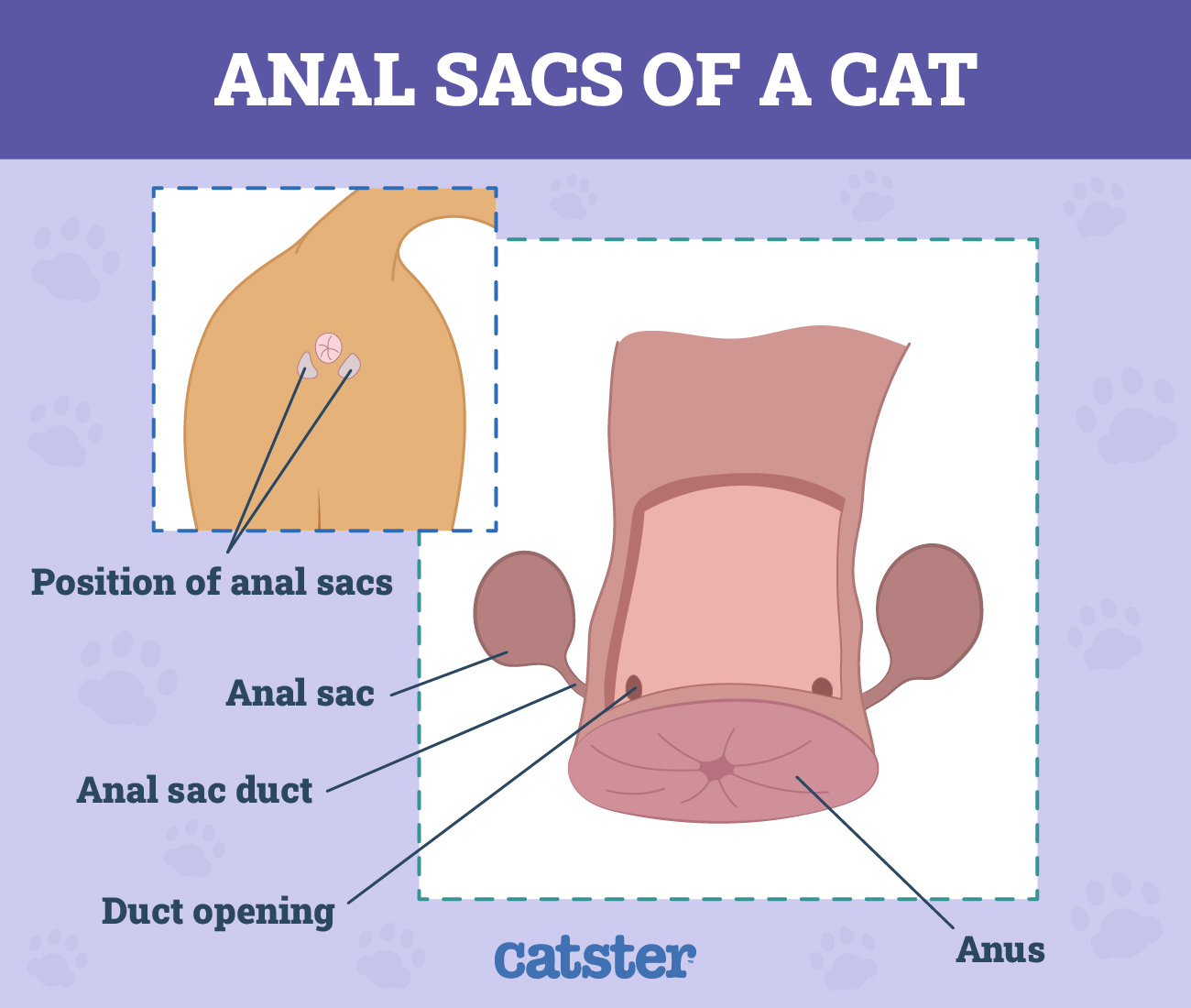
Causes
Common problems with a cats anal glands include:
- Impaction- If the anal sacs do not empty normally when a cat defecates then the secretions sit in the sacs and can become thicker. The thicker it is, the more difficult it is for it to empty out, and the anal sacs can become impacted.
- Infection- If an impaction is not treated the affected anal glands will become infected.
- Abscess– Infections can develop into painful abscesses which can burst causing a blood and pus to come from the area.
- Adenocarcinoma– Less commonly cats can develop cancer in an anal gland.
As well as swelling around the anus, cats with anal sac disease will show pain and discomfort. Signs usually present as one or more of the following:
- Scooting
- Licking and biting the area
- Straining while pooping
- Reluctance to pass feces
Anal gland disease will undoubtedly prove to be an uncomfortable experience for your cat. Taking care of the issue promptly will alleviate a lot of the suffering.
Treatment
Often, the remedy for anal gland disease is to take your cat to your veterinarian so they can expel the fluids in a clinical setting. If there is a more significant underlying issue or infection, your veterinarian will advise a suitable treatment plan.
3. Diarrhea
Diarrhea, at any point, can cause redness and inflammation around the anal area, often along with a dirty and smelly bottom.
Whether your cat just ate something they shouldn’t have or there’s a deeper issue, the reason will need uncovering. So, if you’ve noticed your cat has had a few loose bowel movements, and things don’t seem to be solidifying, it could require professional attention.
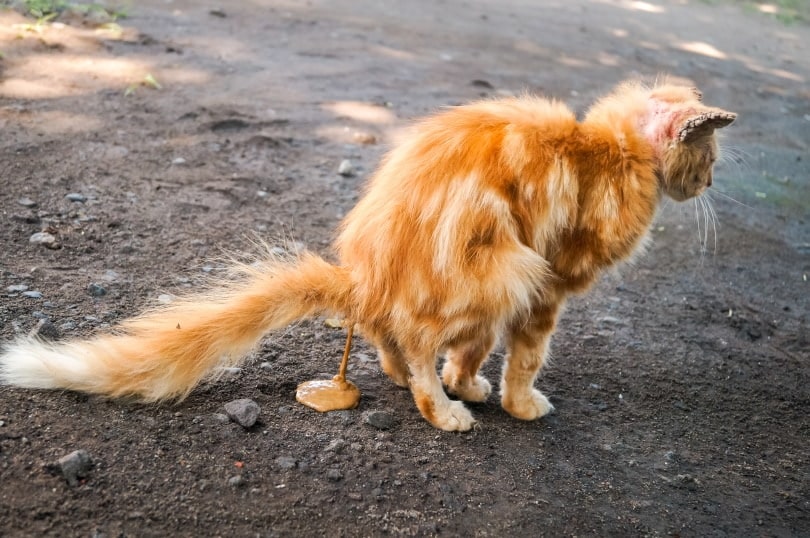
Causes
The amount of health issues that can spark diarrhea are too many to mention and the severity can range from mild to severe. However, we want to go over some of the causes so you can see how incredibly different the underlying reasons can be, they include:
- Sudden dietary change or eating something they shouldn’t have
- Intestinal worms
- Other GI parasites such as giardia
- Bacterial infections
- Inflammatory bowel disease
If your cat has bloody diarrhea, fever, vomiting, lethargy, decreased appetite, or any other concerning signs, then you should contact your vet straight away.
Treatment
Sometimes diarrhea improves quickly and no treatment is required. However if the diarrhea is not settling quickly, or is accompanied by other signs then a vet visit is required. They may recommend further tests to diagnose the underlying cause and choose the best treatment option. Your cat may also require supportive treatments such as fluid therapy and special diets.
4. Allergies
Allergies can also cause inflammation of the area around the anus. Food allergies, flea allergies and allergies to things in the environment can all result in irritation around the bottom and a sore and swollen anal region.

Causes
The most common allergies in cats include:
- Fleas
- Food allergy
- Environmental allergies, for example to house dust mites or pollen.
Flea allergies can be very irritating, and it can sometimes spread to affect the bottom area. Fleas don’t typically feed on the anus, per se, but it can cause irritation that spreads to this region, making your cat over groom or even pull out hair. This irritation can lead to inflammation of these soft tissues.
The most common culprit for food allergies is generally some kind of protein. Your vet will discuss appropriate food trials if this is a possible cause of the problem.
Treatment
There are various options depending on the underlying allergy but cats may need some anti-inflammatory medication to provide relief while the cause is investigated.
Ultimately, the appropriate treatment will be up to your veterinarian. If you suspect allergies in your cat, it’s best to make an appointment now so you can work to get to the bottom of the issue.
5. Rectal Polyps
Rectal polyps are rare, but they can happen in cats. These growths come from the rectal or anal wall and are often flap-like protrusions, attached to the wall by a thinner stalk of tissue. They are most commonly solitary but occasionally cats can have several. Most rectal polyps are non cancerous.
Cats may show signs of straining to pass stools, and blood in the feces. Sometimes the polyp can protrude from the anus and this can look similar to a hemorrhoid.
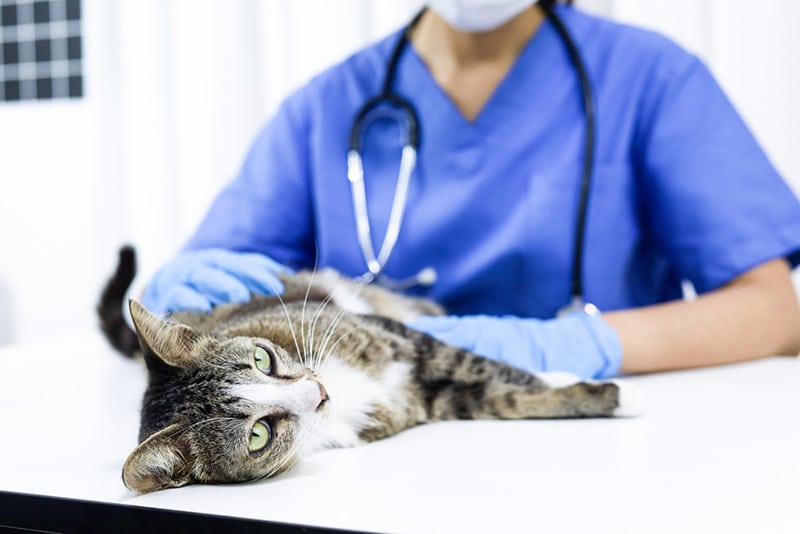
Causes
Unfortunately, little is known about the underlying cause of rectal and anal polyps in cats. It doesn’t seem that there is any evidence to support a specific breed or sex of cat increases any likelihood of developing these polyps. Since rectal and anal polyps can have many of the same signs as other diseases, your veterinarian will need to perform a thorough physical exam and may need to run some other tests before making a diagnosis.
Treatment
Sometimes your vet can determine anal polyps by examining the anal opening. Surgery is usually required to deal with polyps and a sample of the growth is sent off to the lab to confirm that it is benign.
 Conclusion
Conclusion
If you think your cat has developed hemorrhoids, we hope we’ve given you some good information as to what it could be instead. Our descriptions are no substitute for veterinary advice, though.
If you’ve noticed any changes in your cat or they are displaying other signs as well, it’s time to make a veterinary appointment immediately. What you see could result in a very simple fix or be chronic or complicated. It’s always best to have your cat seen just to ensure no further treatment is necessary.
Featured Image Credit: Prystai, Shutterstock

